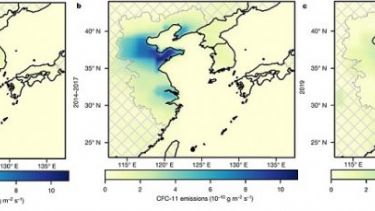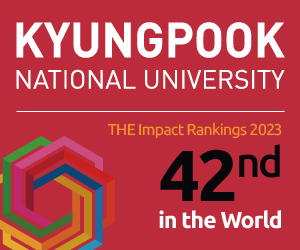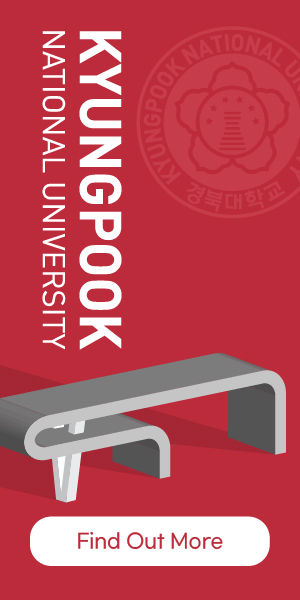A new study reports that combined melatonin and nitric oxide application enhance plant resistance to heavy metal toxicity.
Environmental contamination by heavy metals is a global health hazard. Heavy metals absorbed by plants find their way into the food chain. Plant compounds, such as melatonin (MT) and nitric oxide (NO), enhance their tolerance and resistance to heavy metal stress. In a new study, researchers demonstrated that combined MT and NO application increases the soybean plant tolerance to lead and cadmium toxicity by regulating the activation of related antioxidant and molecular transcription factors.

Dual action of melatonin and nitric oxide increase resistance of soybean plants to lead and cadmium toxicities.
A combination of melatonin (MT) and nitric oxide (NO) is more effective in mitigating Pb and Cd stress in soybean plants than their individual administrations. The combined application of MT and NO significantly enhance plant tolerance to heavy metal toxicities by regulating the inherent antioxidant and molecular signaling pathways.
Image credit: The authors
License type: Original Content
Usage restrictions: Cannot be reused without permission.
The expansion of industrialization and mining has led to significant increase in the heavy metal accumulation in the soil and aquatic environments. Heavy metals, such as lead (Pb) and cadmium (Cd), adversely affect plant growth through reduction in nutrient uptake, membrane integrity, and photosynthetic activity, which causes chlorosis (yellowing of leaves due to lack of chlorophyll). In response to such adverse conditions, plants adopt defensive strategies, such as enhanced antioxidant activity, hormonal regulation, enhanced membrane integrity, and activation of stress response transcription factors.
Melatonin (MT) is an indole-amine plant stress alleviator and a remarkable plant growth regulator. It enhances plant tolerance to biotic and abiotic stresses, including heavy metal toxicities. Nitric oxide (NO) regulates various physiological, metabolic, and pathophysiological processes in plants under stress. Moreover, induced NO expression in plants may regulate their responses to stresses such as heavy metal toxicity. However, although the individual MT and NO roles are understood, the role of their combined application on plant stress tolerance and growth is unclear.
To fill this knowledge gap, a group of researchers, including an international researcher and first author of the study, Dr. Muhammad Imran, under the guidance of Professor In-Jung Lee from Kyungpook National University, Republic of Korea, investigated the impact of a combination of MT and NO on plant growth and tolerance under Pb and Cd toxicity in soybean plants. Their study was made available online on September 22, 2022, and was published in Volume 308, Part 3 of the journal Chemosphere on December 01, 2022.
“To clarify the roles of MT and NO in regulating the antioxidant enzyme activities, we investigated plant growth, nutrient uptake, and their effects on mitogen-activated protein kinase (MAPK) cascades under Cd and Pb toxicity in soybean plants. We assessed the influence of combined MT and NO application on the gene expression involved in NO, metal-regulatory transcription factors (MTFs), MAPKs, and calcium-dependent protein kinases (CDPK) cascades in response to metal toxicity,” explains Prof. Lee.
Surface sterilized soybean seeds were used to grow saplings, which were then treated with MT, sodium nitroprusside (SNP, NO donor), 2-4-carboxyphenyl-4,4,5,5-tetramethylimidazoline-1-oxyl-3-oxide (cPTIO, NO scavenger), Pb, and Cd. Soon after, the plants were divided into four groups based on the treatment administered: control (no treatment), Pb only, Cd only, and a combination of Pb and Cd. Each group had subsets where the following treatments were applied: only heavy metal, metal and SNP, metal and MT, metal with both SNP and MT, and metal with MT and cPTIO. After eight days, they assessed various parameters like plant growth, antioxidant enzyme activity, photosynthetic capabilities, phytohormone levels, etc.
They found that a combined MT and NO application (MT/NO) was more beneficial than MT or NO alone in plants under Pb and Cd stress. MT/NO increased photosynthetic efficiency while reducing oxidative stress in the plants, causing an improvement in biomass. MT/NO increased the uptake of calcium and potassium ions and reduced the Pb and Cd mobilization from contaminated soil into the plants. Furthermore, organic acid exudation into the rhizosphere increased significantly, mitigating the overall metal toxicity.
Further analyses revealed that MT/NO minimized metal toxicity by lowering the endogenous levels of phytohormones, abscisic acid, and jasmonic acid. This finding accompanied the downregulation of the abscisic acid biosynthetic gene (NCED3) and the upregulation of the catabolism-related genes (CYP707A1 and CYP707A2).
The exogenous MT and NO application on soybean plants significantly increased the endo-MT and endo-S-nitrosothiol levels, mitigating the heavy metal stress in the plants. RT-qPCR analyses revealed increased mRNA expressions of related genes, gmNR and gmGSNOR, further corroborating the above mechanism.
Enzymes such as MAPK and CDPK are essential in plant responses to biotic and abiotic stresses. MT/NO upregulated the MAPK and CDPK cascades in the presence of Pb and Cd, increasing plant tolerance levels. Furthermore, MT- and NO-mediated the upregulation of the metal response element-binding transcription factor (MTF-1) and the stress response gene (WARKY27), improving heavy metal detoxification and tolerance.
Summarizing the importance of their study, Prof. Lee concludes, “A positive role of MT and NO in the modulation of plant defense mechanisms via regulating the levels of antioxidants, calcium signaling, and MAPK cascades to reduce oxidative stress induced by toxic metals such as Pb and Cd.”
In conclusion, this study reveals that MT/NO mitigates Pb and Cd toxicities by activating related antioxidant and molecular transcription factors in soybean plants, paving the way for future research on overcoming heavy metal toxicities.
Reference
|
Authors
Title of original paper: |
Muhammad Imrana, Abdul Latif Khanc, Bong-Gyu Muna, Saqib Bilalb, Shifa Shaffiquea, Eun-Hae Kwona, Sang-Mo Kanga, Byung-Wook Yuna, and In-Jung Lee a,*
Melatonin and nitric oxide: Dual players inhibiting hazardous metal toxicity in soybean plants via molecular and antioxidant signaling cascades |
|
|
Journal: |
Chemosphere |
|
|
DOI: |
||
|
Affiliations |
aDepartment of Applied Biosciences, Kyungpook National University, Daegu, 41566, Republic of Korea bNatural & Medical Sciences Research Center, University of Nizwa, Nizwa 616, Oman cDepartment of Engineering Technology, College of Technology, University of Houston, Sugar Land, TX 77479, USA |
|
|
*Corresponding author’s email |
||
About Kyungpook National University
Kyungpook National University (KNU) is a national university located in Daegu, South Korea.
Founded in 1946, it is committed to becoming a leading global university based on its proud and lasting tradition of truth, pride, and service. As a comprehensive national university representing the regions of Daegu and Gyeongbuk Province, KNU has been striving to lead Korea’s national and international development by fostering talented graduates who can serve as global community leaders.
Website: https://en.knu.ac.kr/main/main.htm
About Professor In-Jung Lee from Kyungpook National University
Professor In-Jung Lee is a professor at the Department of Applied Biosciences, Kyungpook National University (KNU), South Korea. Professor Lee is an avid researcher in the fields of plant physiology and hormones and plant-microbe interactions. His research consistently demonstrated dedication and innovation in plant stress physiology. He has also achieved the goal of studying the importance of melatonin and nitric oxide and their role in plant development and conducted valuable research. This not only highlights his expertise but also showcases his significant contributions. He has more than 500 publications to his credit in journals with high impact factors and an impressive h-index of 69 (Web of Science).
About Professor Byung-Wook Yun from Kyungpook National University
Dr. Byung-Wook Yun is a professor at the Department of Applied Biosciences, Kyungpook National University (KNU), South Korea. Dr. Yun specializes in plant immunity, defense mechanisms, and disease resistance. He has more than 100 publications to his credit in journals with high impact factors and an impressive h-index of 36 (Web of Science). He earned his Ph.D. from KNU in the field of Plant Biochemistry and has experience in investigating the role of nitric oxide (NO), a small redox-active signaling molecule, in the plant immune system at the University of Edinburgh for more than 10 years. His team is currently working on stress biology to understand the mechanism of how NO plays a role in modulating stress responses. In addition, his team aims to construct a nanoparticle-NO system as an enhancer to improve plant growth and tolerance to environmental stresses.
About Dr. Muhammad Imran from the National Institute of Agriculture Science
Dr. Imran is a senior researcher at the National Institute of Agriculture Science, Rural Development Administration, Republic of Korea. He received his postdoc and Ph.D. at Kyungpook National University in 2022 and possesses extensive expertise in Plant Physiology, Phytohormonal Signaling, Stress Physiology, Metabolites, and Plant-Microbe Interaction. He has published more the 50 research articles in journals of international repute.






















